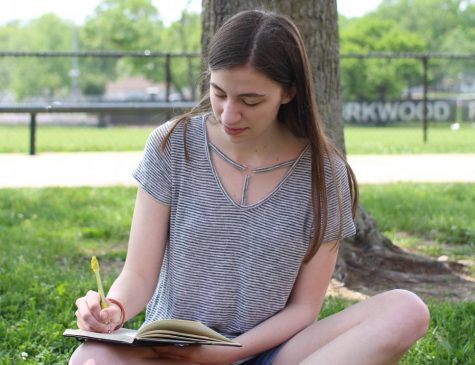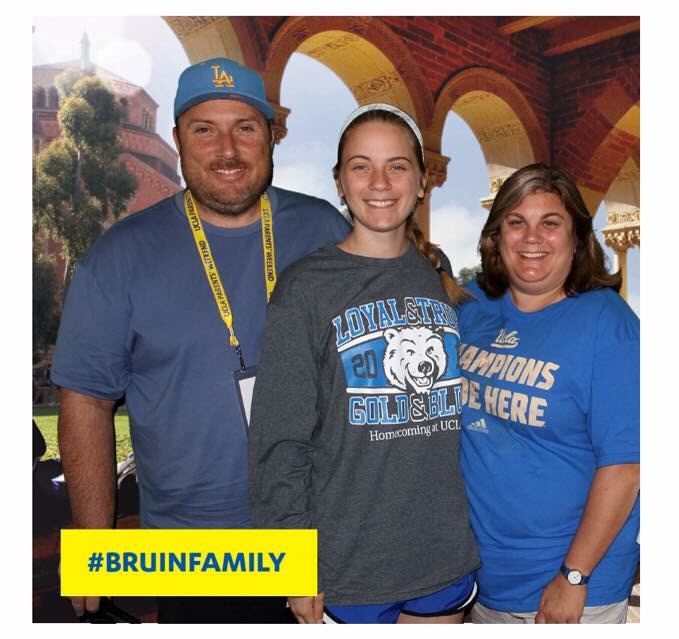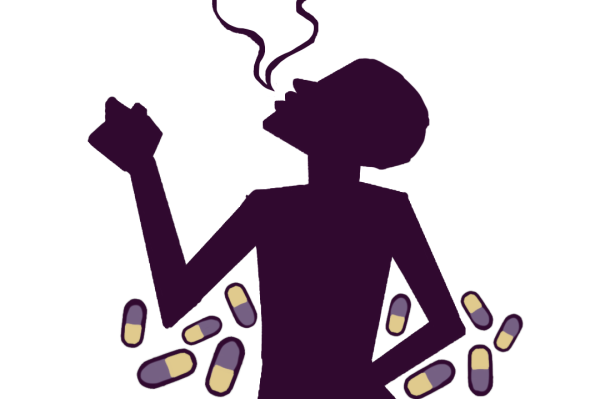College criteria: then vs. now
Photo courtesy of Claire Hubert
Claire Hubert, center and 2015 alumnus and sophomore at University of California-Los Angeles, gets her picture taken with her parents Tony and Melanie Hubert on parents weekend. Claire was always competitive in high school, so she thought it natural for her to apply to the most competitive of colleges. “UCLA was my dream since I was eleven and I wasn’t sure if I would get in, so I was looking at other schools that were the same academic caliber,” Hubert said. ” I knew I wanted to go somewhere academically challenging and I think I got caught up in admissions rates and the competitiveness of schools.”
Since 2005, Northwestern University’s acceptance rate dropped from 33 percent to 10.7 percent and Vanderbilt University’s plummeted from 40 percent to a staggering 10.4 percent. Across the country, college acceptance rates are shrinking as schools become more selective due to an increase in applicants and application information.
“The Common Application, by virtue of what it is and how accessible selective schools have become by accepting it, [makes] it simpler for more students to apply to more selective schools,” Abby Peterson, college counselor, said. “I hope that students wouldn’t apply to highly selective schools unless they really wanted to be there.”
The recent drop in acceptance rates, has caused students like Claire Hubert, 2015 alumnus and sophomore at University of California-Los Angeles (UCLA), to feel more pressure throughout high school.
“It creates this culture where people focus on admission rates rather than on if the school’s going to be a good fit for them,” Claire said. “People get obsessed with going to a selective college and are stressed their senior year because they have to check all of these boxes.”
Claire was able to go to her dream school by working to make herself what she called a “qualified and attractive candidate.” Getting into a highly selective school was important to her even though her parents never put pressure on her to work too hard.
“If you’re going to play soccer, play because you love it,” Melanie Hubert, Claire’s mother, said. “If you’re in chess club, do it because you love it and you’re 100 percent passionate about it.”
Both of Claire’s parents attended St. Louis University, her mother graduating in 1992 and her father in 1993. But due to the drop in acceptance rates, students in 2016 have different challenges to face if they want to go to their dream school.
“We have students who want to go to the University of Michigan or Yale, but even if they have perfect class rank and test scores, we never know if that’s going to be enough to get them admitted,” Peterson said.
In 1990, only 9 percent of students applied to seven or more colleges, but that jumped to 29 percent in 2011 according to the National Association for College Admission Counseling.
“Applying to college was stressful, but looking back, I don’t think I needed to apply to the nine schools I ended up applying to,” Claire said. “I got too caught up in looking at admissions rates and the competitiveness of schools.”
Since the 1980s, the competitiveness of college acceptance has escalated to a point where Claire describes it as “cutthroat.” Because of this unrelenting competition, students have started to take more difficult classes.
“It certainly wasn’t as competitive as it is now,” Melanie said. “Claire visited 10 schools to try to get a feel for the culture of each. I looked at two schools and got into one without going on campus and that was pretty common for my time.”
College acceptance rates affect high school students already applying to college and those who have not started thinking about life after graduation. According to Claire, with admissions rates dropping, it is challenging to get into college and there is a lot of undue stress on students.
“Just because a school is more selective doesn’t mean it’s the best school for someone,” Claire said. “At the end of the day, go where you’re going to be happy, where you’re going to be challenged and where you’re going to grow.”
Your donation will support the student journalists of Kirkwood High School. Your contribution will allow us to purchase equipment and cover our annual website hosting costs.

Interests: Writing, reading, grammar, slam poetry, Harry Potter, musicals, theater, learning about mental health, and learning new words
Favorite...













